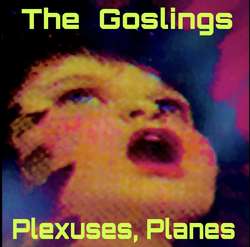I saw Father John Misty in concert about two years ago. Josh Tillman sauntered onto stage in an all-white suit—wild and mustachioed—advertising the caricature of a drug-addled, disillusioned troubadour that he had created for himself. He lit a cigarette almost immediately and somehow, in the carcinogenic chokehold, sang in a way that sent shudders through every vertebrate in Terminal 5. Now, in early 2015, Father John is back with I Love You, Honeybear—the somewhat satirical, hugely personal album that invites us to explore his newfound sensitivity. Rather than calling out the capitalist locusts of Hollywood or meditating on bourgeois America (with the exception of “Bored In The USA”), Tillman wades through a Sargasso Sea of emotions, capsizing in the metaphysics of love and insecurity.
Honeybear kicks off with the sweet lull of “I Love You, Honeybear” into “Chateau Lobby #4 (in C for Two Virgins)”, a percussion-heavy piece that summons the company of mariachi horns. The electronic embellishments of “True Affection” are short-lived, however, as Father John moves onto the more minimalistic, cathartic core of record. He even makes a momentary effort to preserve the political consciousness that drove 2012’s Fear Fun by poking fun at middle-class ennui and the Klonopin culture of America. The whole installment wraps up neatly on a full-circle note, the guitar sighing in the backdrop as Tillman croons the very first words that he said to his wife on the day they met in the parking lot of a grocery store.
Tillman coaxes his neurosis into compact little poems with autobiographical flourish. The masonry of Honeybear is best assembled in, “Holy Shit”, an acoustic litany full of social citations that investigate the idea of marriage as a time-honored mistake. Father John disses love as an “institution based on human frailty” and an “economy based on resource scarcity”, but at the end of the uneasy tirade, he assures his wife, Emma, that they will be exempt from these vices. Honeybear chronicles the transformation of his musical persona, his graduation from professional iconoclast to lovesick philosopher. This isn’t to say that the content of this album is all rosewater. It's diluted with certain elements of dystopia and anxiety but in just about forty-five minutes of song, Josh Tillman grows in ways unimaginable. The man behind Father John Misty is many things: indie Messiah, the landlord of nightmarish bohemian landscapes, and in this case, a strung-out Prince Charming. But above all else, Tillman is a storyteller and I Love You, Honeybear is his happy ending.




